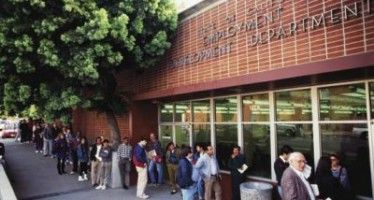CARB's leadership fetish
JUNE 3, 2010
The word is “leadership.” These days, it’s hard to find a news article or press release about the California Air Resources Board (CARB) that doesn’t talk up the agency’s “leadership” in something or other.
California’s automobile fuel efficiency standard program is a “successful model of state leadership” that “will be applied in the future to continue to provide the cleanest possible cars with even greater greenhouse gas reductions,” CARB chairwoman Mary D. Nichols said in a March 1 press release.
A May 21 statement by Nichols trumpeting President Barack Obama’s new truck fuel efficiency standards declared that “Under the Clean Air Act, Congress gave California a leadership role in the area of motor vehicle regulations.”
And a joint CARB/National Oceanic and Atmospheric Administration (NOAA) press release on the big, new CalNex research project sent out on May 28 said that CARB “provides its leadership in air pollution studies with decades of baseline air quality data, an on-going atmospheric capacity and existing research capabilities.”
You read that right: CARB – which began four decades ago to regulate so-called “point sources” of air pollution like cars and trucks — doesn’t only “lead” the way in terms of fuel standards, but also in the realm of atmospheric science and research itself.
CalNex is a $20 million effort ($15 million fronted by NOAA with the rest coming from CARB) that will use four aircraft and one research ship to monitor air pollution and greenhouse gases at various sites all over the state. It’s been in the works for three years, and was originally going to use a German fighter jet owned by Google to collect atmospheric samples at high altitude, but that was dropped some time ago (a NOAA spokesperson didn’t return a call for comment by press time).
“Combining resources with NOAA will give California new data to link our clean air and global warming protection efforts,” Nichols said in the May 28 CalNex release. “The scale and sophistication of CalNex represents a milestone in ARB’s 40-year history of groundbreaking air pollution research.”
Indeed, NOAA’s 2010 CalNex White Paper, published January 2008, constantly mentions CARB’s research capabilities in glowing terms that pay more than proper respect to the state’s “leadership” role in all things air pollution.
“It [CalNex] will constitute one of a series of comprehensive regional air quality and climate assessments conducted by NOAA and an expansion of CARB’s leadership of California air quality studies,” the paper states on page two. The use of the word “expansion” is ironic, considering that’s exactly how a critic of CARB put it when told of regulatory body’s involvement in CalNex.
“It really shows the extent to which CARB has expanded under AB32,” said one legislative aide familiar with CARB and the vaunted cap and trade law that continues to be controversial for its alleged job killing regulations and requirements.
In fact, CARB’s “research” – at least that which is highlighted on the official CARB website, is merely sponsored by CARB. The researchers themselves come from private labs or the University of California. It can be quite dated, too. For instance, of the 130 or so reports on this unwieldy page of studies on stationary sources of air pollution, 106 of them were written at least a decade ago.
There may be a shortage of recent research on CARB’s Web site, but there is no shortage of pamphlets, press releases and “fact sheets” testifying to CARB’s “leadership.” In a way, CARB has almost fetishized the idea that our state “leads” the nation in air pollution. While air quality has improved over the last 20 years in real terms, the state still offers some of the worst air pollution in the nation, as this recent American Lung Association study makes clear. And sometimes, given some of the things written by (and about) CARB, you’d think that was almost a point of pride.
“California is the world’s 12 largest source of carbon dioxide, the chief heat-trapping gas that causes global warming,” says this Union of Concerned Scientists fact sheet on AB 32 that’s quoted in the 2008 NOAA White Paper on CalNex. “The state has a responsibility to reduce its share of emissions, and by doing so can lead the United States – and the world – in developing the innovative policies and technologies needed to avoid the most dangerous consequences of global warming.”
Oh, and just to make sure no one missed the point, that whole paragraph appears under the headline “California Leadership.”
–Anthony Pignataro
Related Articles
Sick leave bill could kill jobs, cut hours
An Assembly bill requiring employers to provide paid sick leave could result in nearly a million California workers either
An ode to our Golden Guardian
MAY 20, 2010 Not sure if you’ve noticed lately, but terrorism warnings are increasingly like car alarms. We all hear
Arnold’s Bentley Sales Up 37%
John Seiler: I’ve been keeping tabs here on the hypocrisy of ex-Gov. Arnold Schwarzenegger’s love of gigantic, gas-guzzling dinosaurs. Since




